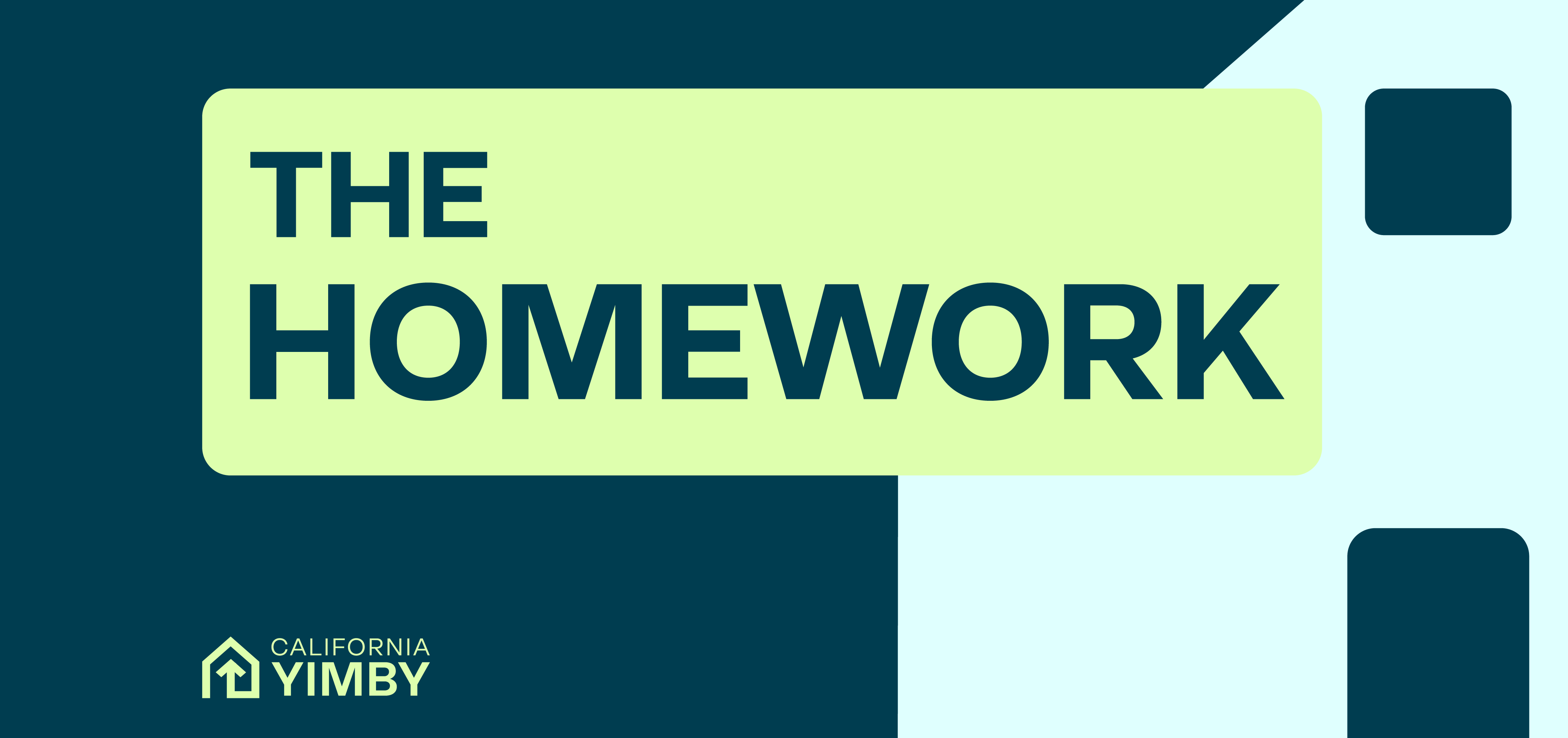The HomeWork: October 22, 2021

Welcome to the October 22, 2021 Main edition of The HomeWork, the official newsletter of California YIMBY — legislative updates, news clips, housing research and analysis, and the latest writings from the California YIMBY team.
News from Sacramento
Housing Research & Analysis
Infill Housing: The Most Important Climate Policy in California
What can city governments do to fight climate change? In an influential 2018 paper, renowned climate scientists Daniel Kammen, Chris Jones, and Stephen Wheeler analyzed the emissions reduction potential of 717 California cities and all 58 counties.
What they found: For most coastal cities, the number one opportunity for reducing carbon pollution is through “infill” housing development — also known as “making it legal to build more multi-family housing in our cities.”
The study has important findings that should be central to land use, climate, public health, and environmental policy in the Golden State.
Key takeaways:
-
Local governments have policy levers they can use right now to reduce statewide emissions by up to 35%.
-
Infill housing is the most powerful local policy tool for climate action in urban areas. While the urban core of the San Francisco Bay Area has some of the lowest per capita emissions in the state, and lowest emissions overall, the area also has some of the highest carbon footprint neighborhoods in California, indicating major decarbonization potential.
-
“Urban infill reduces all aspects of carbon footprints, including 2.5 MtCO2e from transportation, 1.3 MtCO2e from energy, 1.8 MtCO2e from food, and 1.7 MtCO2e from goods and services statewide.”
Sprawl Costs the U.S. $1 Trillion Every Year
In a 2015 report for the Victoria Transport Policy Institute and London School of Economics, transportation scholar Todd Litman analyzed the total cost of suburban sprawl in the United States. The topline figure: $1 trillion per year.
Key takeaways:
- “Sprawl has two primary resource impacts: it increases per capita land development, and by dispersing destinations, it increases total vehicle travel.
- The externalities of expanded suburban settlement and increased car travel carry direct costs and opportunity costs that can be quantified: traffic, pollution, crashes, infrastructure and services—in total, draining $1 trillion every year out of the economy.
- But there are solutions: “smart growth policies that create more compact communities can provide substantial economic, social and environmental benefits in both developed and developing countries.”
Houser Headlines
- California built its way into extreme wildfire danger. Now it needs to build its way out
- What could the end of single-family zoning mean for California’s affordable housing crisis?
- The big change coming to California neighborhoods
- In defense of the “gentrification building”
- What we talk about when we talk about gentrification
- Gavin Newsom Is Much More Than the Lesser of Two Evils
- The Gentrification of Blue America
- Feds Say California Too Expensive To Welcome Afghan Refugees
- Why Afghan Refugees Aren’t Actually Welcome in California
YIMBY Social – Top Posts”
Last week, California YIMBY launched the next video in our ongoing series of explainers — “Housing Policy is Climate Policy.” Watch and share the video!

Share the good word
We welcome your ideas and feedback — send story tips and ideas to Homework@cayimby.org.
Did someone forward this email to you? Sign up to get it here.